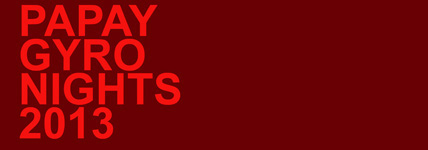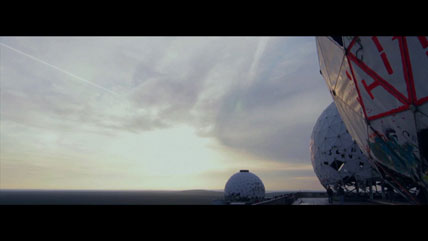BERG
11'53" - 2011
Teufelsberg is a well-known man-made hill in the outskirts of Berlin. It was built by the American Allies with the rubble of a city destroyed by World War 2, in the 20 years that followed its end. Created out of debris, on Grunewald’s plateau, Teufelsberg became the highest viewing point in Berlin, and a favourable location for military observation of the city. Prior to establishing the first permanent buildings on site in the very late 1950s, American Mobile Allied listening units used to drive to various other locales throughout West Berlin hoping to gain the best vantage point for listening to Soviet, East German, and other Warsaw Pact nations military traffic.
Due to the evident vantage point it could offer, a permanent listening station was then built on Teufelsberg, to be run by the National Security Agency until the fall of the Berlin wall. With the end of the Cold War, the listening station became redundant, it was closed down and its equipment removed. It remained a disused structure for over 10 years, to which followed another 10 years of negotiations between various property developers interested in purchasing the land around it, the possibility to create a spy museum, and the final decision to classify the hill as forest in the land use plan of Berlin, halting any possible attempts to build.
Whilst the site remains private property, since 2004, local visitors as well as tourists regularly access it. A bright gallery of graffiti colours the walls of the three floors just beneath the listening domes, a mash up of broken glass, rusty wires and asbestos are some of the elements that compose the interior design of this place. The traces of its history are still visible on the building, and as in many other places in the city, this aspect makes the location spookily attractive.
In the last few years, Berlin has seen a progressive fetishization of its painful past, and of the images and sites connected to its most violent memories. Tourists flock to the German capital to grasp a fragment of the city’s historical ambiguity. City tours through museums and public urban sites favour the consumption of images, sounds and text, attempting to fulfil a temporary hunger for a superficial understanding of the city’s debated development. Phases of history, collective memory, and personal biographies are fragmented, summarized and re-arranged into visual captioned maps for rapid absorption.
Teufelsberg lies still on the edges of tourist destination maps, but as more and more artists, musicians and bloggers visit the site and publish their materials, this ghostly, set-like architectural structure keeps feeding the public’s cinematic imagination.
BERG investigates a historical site through an alternate shift between documentary and fictional representation. A soundscape produced from samples from a series of mainstream Spy Movies overlaps a carefully edited selection of classic shots, inspired by the most repetitive cinematic clichés that to be found in the espionage genre. If visuals and sound have a linear continuity in certain sections of the film, as the video unfolds, it becomes clearer that the voiceover belongs to a less recognizable past – more or less fictional - whilst the location, Teufelsberg, is depicted in its contemporary condition. |


